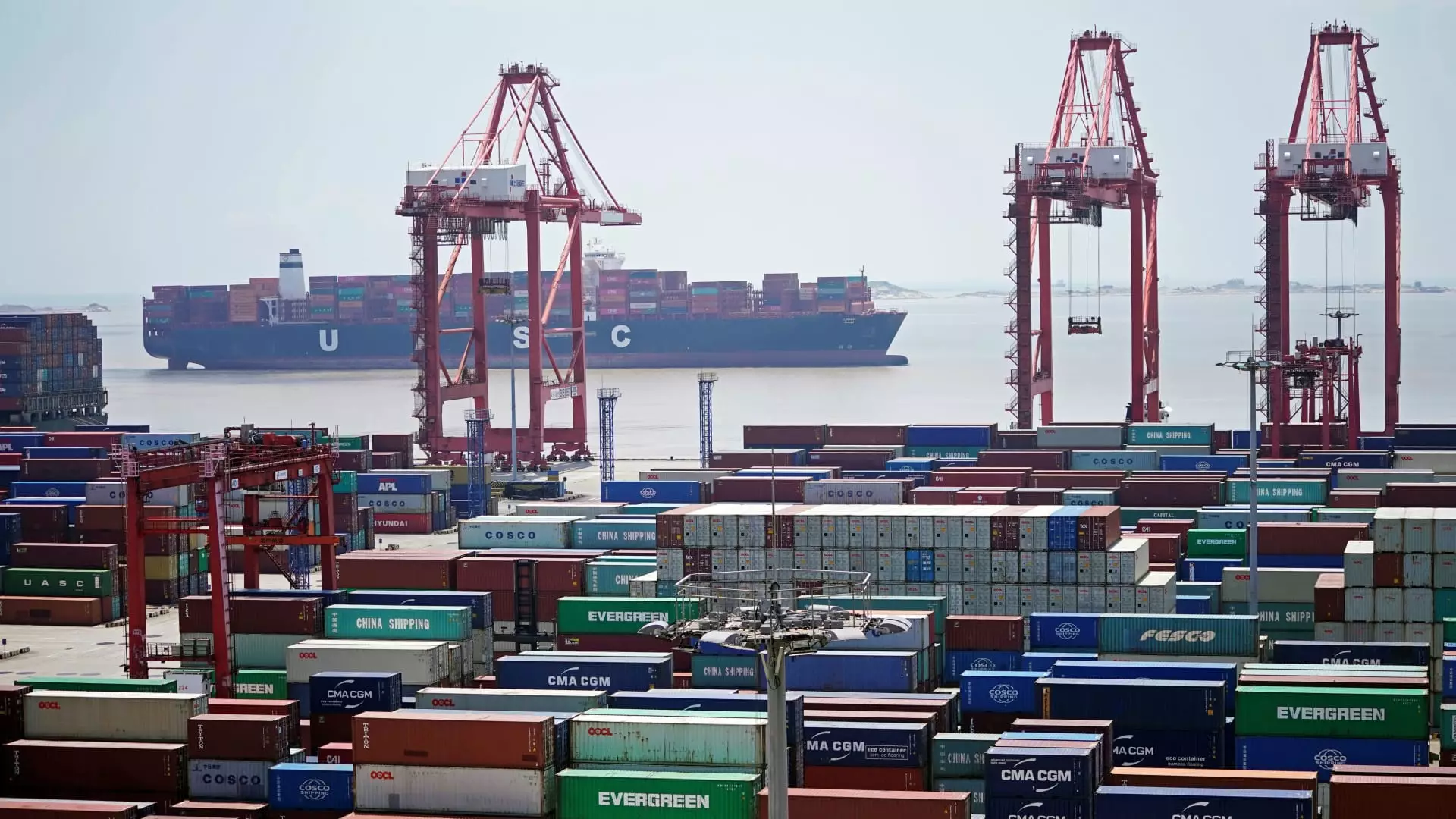China, the world’s largest exporter, faced a challenging year in 2023 as its annual exports saw a significant decline for the first time in seven years. According to customs data, exports fell by 4.6% in 2023, marking a substantial drop after years of consistent growth. This decline was primarily driven by slower global growth and reduced demand for Chinese goods. However, there was a glimmer of hope as December’s export figures surpassed expectations with a 2.3% year-on-year increase, beating the forecasted 1.7% growth.
Although China’s exports faced tough times, the December data provided a hint of a potential recovery. The month witnessed a 2.3% rise in exports, indicating the beginning of an upward trend. However, this slight improvement was not enough to offset the overall decline for the year. Additionally, imports rose by 0.2% in December, falling slightly short of the predicted 0.3% increase. It is evident that China’s trade with major partners, including the European Union and the Association of Southeast Asian Nations, witnessed a decline in 2023 due to lower demand for Chinese products.
China’s largest trading partner, accounting for a significant portion of its export-import activities, remained the United States. Despite geopolitical tensions, trade between the two economic giants remained substantial. On a regional basis, the Association of Southeast Asian Nations emerged as China’s largest trading partner in 2023. Remarkably, Russia stood out among the trading partners, exhibiting robust growth in bilateral trade. China witnessed a nearly 47% increase in exports to Russia and a nearly 13% rise in imports, making it a bright spot in an otherwise challenging year.
Chinese manufacturers are cautiously optimistic about the future. According to Caixin’s December manufacturing purchasing managers’ index, manufacturers anticipate a rise in production throughout 2024. This sentiment is supported by forecasts of stronger global demand, increased client spending, and new product investments. However, it is important to note that the degree of optimism has softened compared to the previous month, signaling lingering concerns. Employment sub-index also experienced a decline, with firms choosing not to replace voluntary leavers or reduce headcounts due to subdued demand.
Macquarie’s Chief China Economist, Larry Hu, predicts a 2% growth in exports for 2024 after a 5% decline in 2023. However, he emphasizes that if exports were to slow down more than expected, policymakers would likely take a more proactive approach through domestic policy support. The recovery of China’s economy from the impact of the pandemic has been slower than anticipated, but it is estimated to have achieved approximately 5% growth in 2023. The official GDP numbers will be released by the National Bureau of Statistics in the coming days, shedding more light on the country’s economic performance.
To counterbalance weak domestic demand, China’s competitive firms are exploring expansion in the global market. This strategy helps curb inflation in the rest of the world but may not be robust enough to boost overall domestic demand. Experts believe that government support through fiscal policy expansion will play a crucial role in strengthening the domestic market and ensuring sustained economic growth.
In 2023, China experienced a decline in exports across various product categories. Notably, machinery, boats, and home appliances were among the few exceptions that witnessed growth. The automotive sector stood out as a bright spot, with an impressive 69% increase in exports from the previous year. However, the pace of growth slowed slightly compared to the January to November period. China’s emergence as the world’s largest exporter of cars, surpassing Japan in 2023, can be attributed to the rapid growth in the electric car market and increased demand from Russia. Chinese manufacturers capitalized on the void left by other auto manufacturers following Russia’s invasion of Ukraine in 2022, leading to a surge in Chinese auto exports.
China’s exports faced unprecedented challenges in 2023, experiencing their first annual drop in seven years. The global slowdown and reduced demand for Chinese goods significantly impacted trade numbers. However, there were glimpses of hope in December’s export figures, surpassing expectations. Chinese manufacturers remain cautiously optimistic about the future, projecting a rise in production throughout 2024. Nevertheless, government support and policies will be crucial in revitalizing the domestic market and ensuring sustained economic growth for China in the coming years.

Leave a Reply